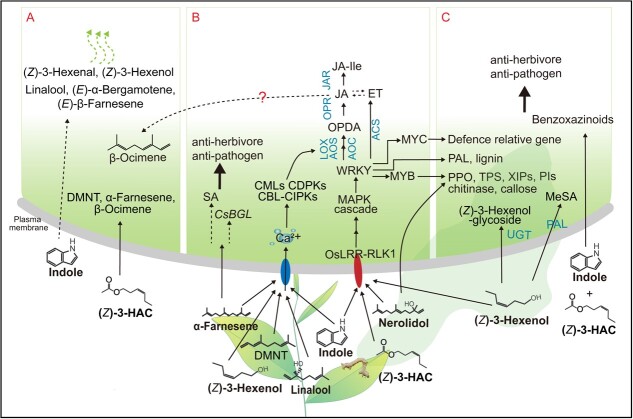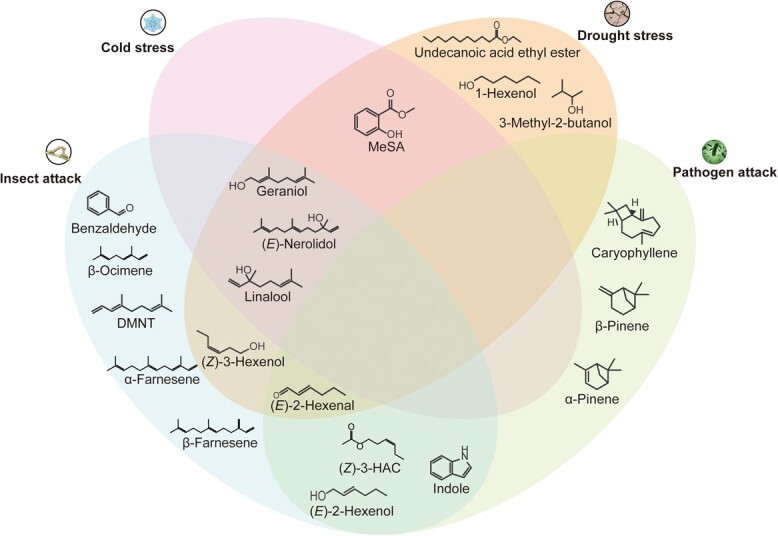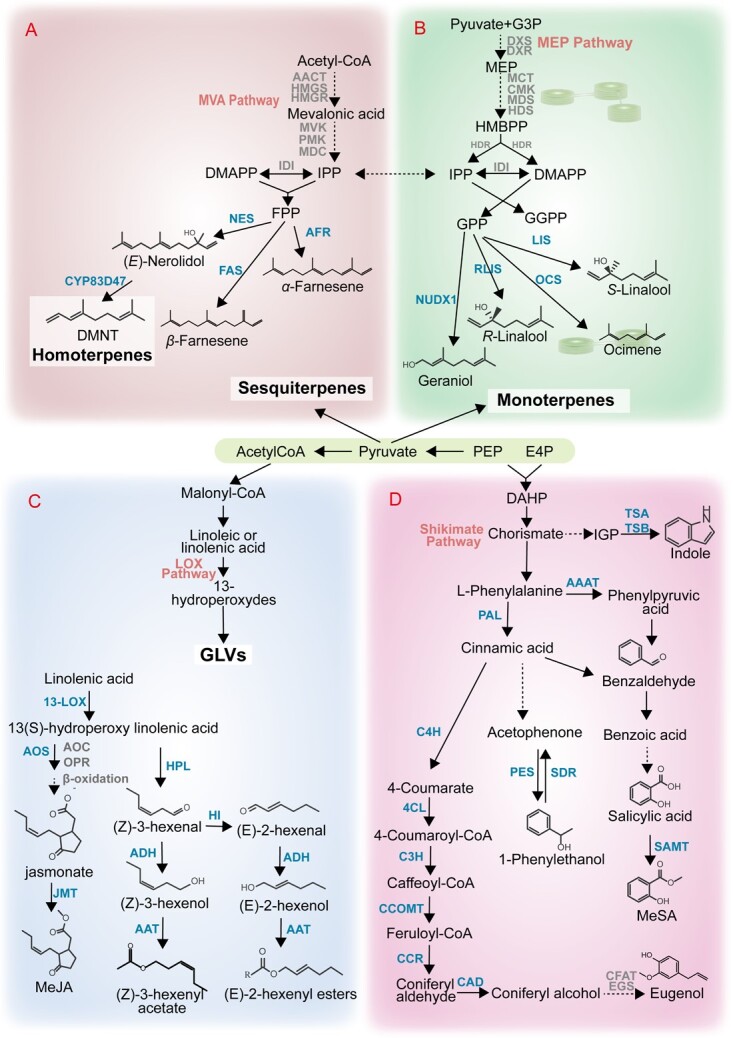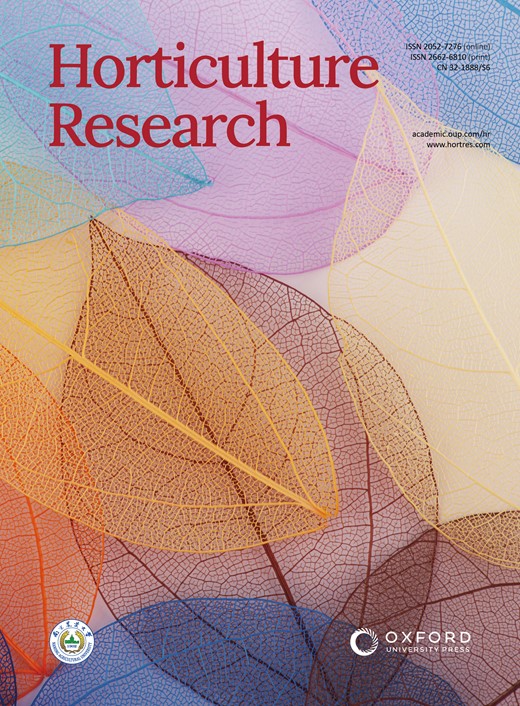Volatile compound-mediated plant-plant interactions under stress with the tea plant as a model.
IF 8.7
1区 农林科学
Q1 Agricultural and Biological Sciences
引用次数: 2
Abstract
Abstract Plants respond to environmental stimuli via the release of volatile organic compounds (VOCs), and neighboring plants constantly monitor and respond to these VOCs with great sensitivity and discrimination. This sensing can trigger increased plant fitness and reduce future plant damage through the priming of their own defenses. The defense mechanism in neighboring plants can either be induced by activation of the regulatory or transcriptional machinery, or it can be delayed by the absorption and storage of VOCs for the generation of an appropriate response later. Despite much research, many key questions remain on the role of VOCs in interplant communication and plant fitness. Here we review recent research on the VOCs induced by biotic (i.e. insects and pathogens) and abiotic (i.e. cold, drought, and salt) stresses, and elucidate the biosynthesis of stress-induced VOCs in tea plants. Our focus is on the role of stress-induced VOCs in complex ecological environments. Particularly, the roles of VOCs under abiotic stress are highlighted. Finally, we discuss pertinent questions and future research directions for advancing our understanding of plant interactions via VOCs.



胁迫下挥发性化合物介导的植物-植物相互作用以茶树为模型。
植物通过释放挥发性有机化合物(VOCs)来响应环境刺激,而邻近植物对这些挥发性有机化合物的监测和响应具有很高的灵敏度和辨别能力。这种感知可以触发增加植物适应性,并通过启动自己的防御来减少未来植物的伤害。邻近植物的防御机制可以通过激活调控或转录机制来诱导,也可以通过吸收和储存挥发性有机化合物来延迟防御机制,以便以后产生适当的响应。尽管研究很多,但VOCs在植物间通讯和植物适应度中的作用仍然存在许多关键问题。本文综述了近年来生物胁迫(如昆虫和病原体)和非生物胁迫(如寒冷、干旱和盐)诱导的挥发性有机化合物的研究进展,并对胁迫诱导的挥发性有机化合物在茶树中的生物合成进行了阐述。我们的重点是在复杂的生态环境应力诱导的挥发性有机化合物的作用。特别强调了VOCs在非生物胁迫下的作用。最后,我们讨论了相关问题和未来的研究方向,以促进我们对植物通过挥发性有机化合物相互作用的理解。
本文章由计算机程序翻译,如有差异,请以英文原文为准。
求助全文
约1分钟内获得全文
求助全文
来源期刊

Horticulture Research
Biochemistry, Genetics and Molecular Biology-Biochemistry
CiteScore
11.20
自引率
6.90%
发文量
367
审稿时长
20 weeks
期刊介绍:
Horticulture Research, an open access journal affiliated with Nanjing Agricultural University, has achieved the prestigious ranking of number one in the Horticulture category of the Journal Citation Reports ™ from Clarivate, 2022. As a leading publication in the field, the journal is dedicated to disseminating original research articles, comprehensive reviews, insightful perspectives, thought-provoking comments, and valuable correspondence articles and letters to the editor. Its scope encompasses all vital aspects of horticultural plants and disciplines, such as biotechnology, breeding, cellular and molecular biology, evolution, genetics, inter-species interactions, physiology, and the origination and domestication of crops.
 求助内容:
求助内容: 应助结果提醒方式:
应助结果提醒方式:


